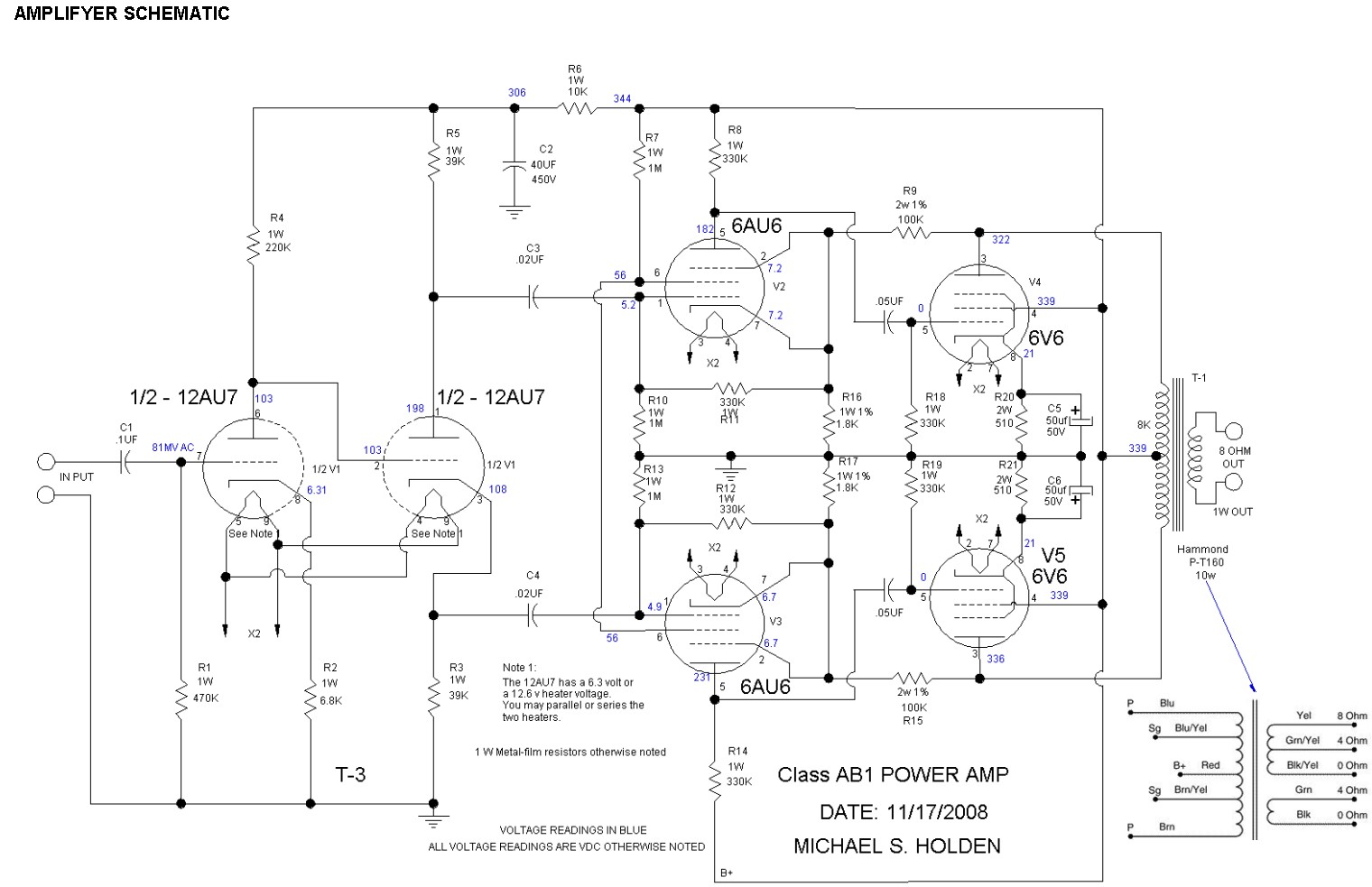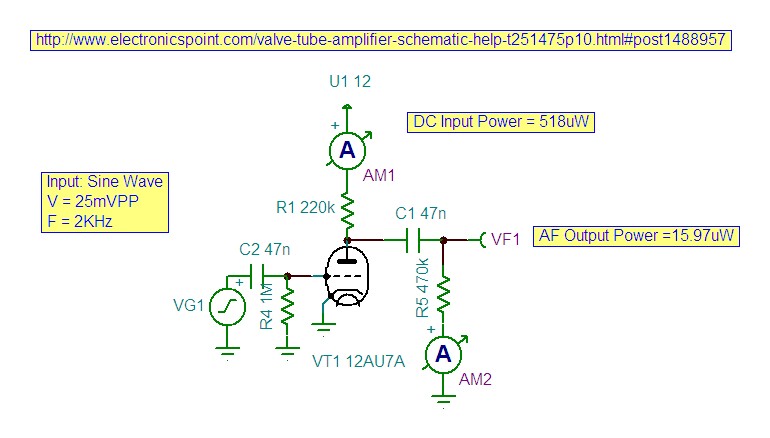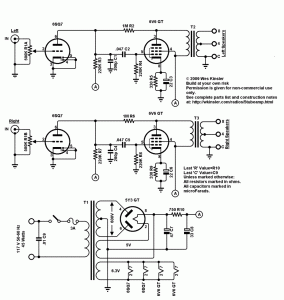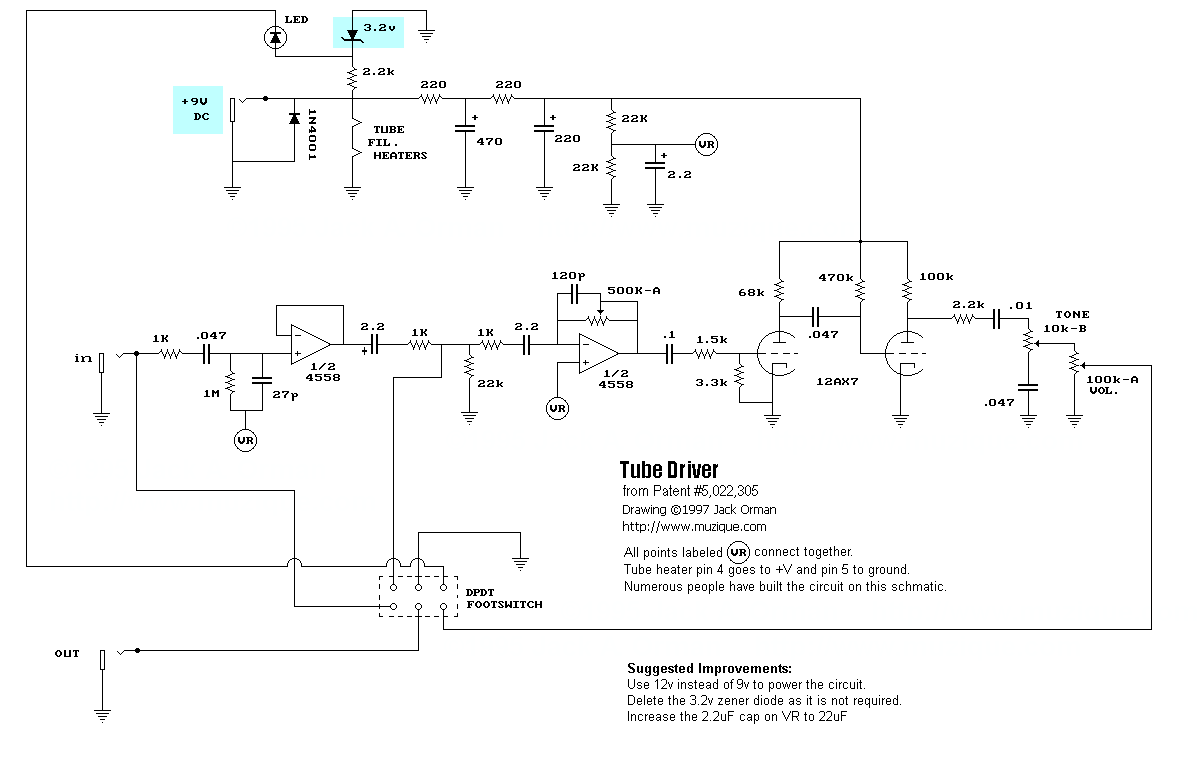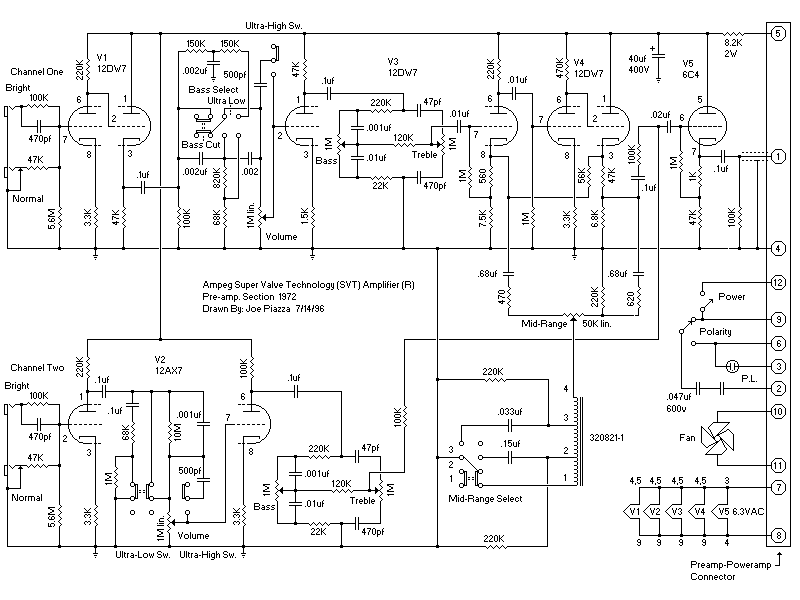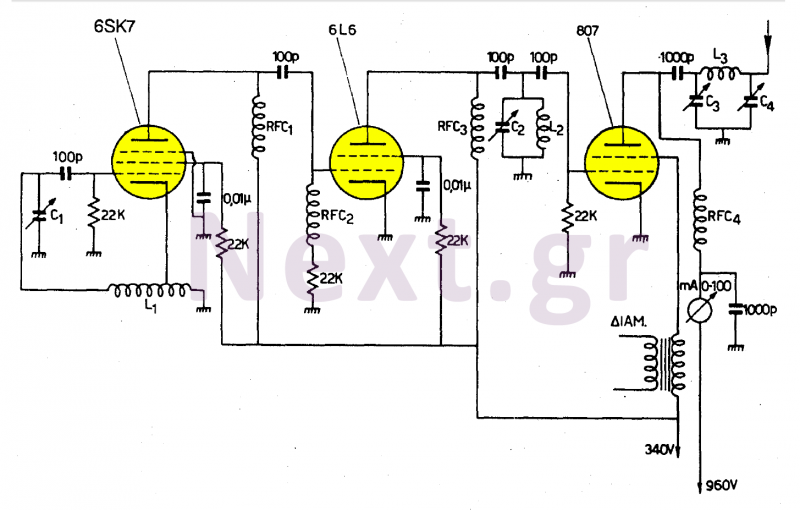
Gray Tube Replication 91
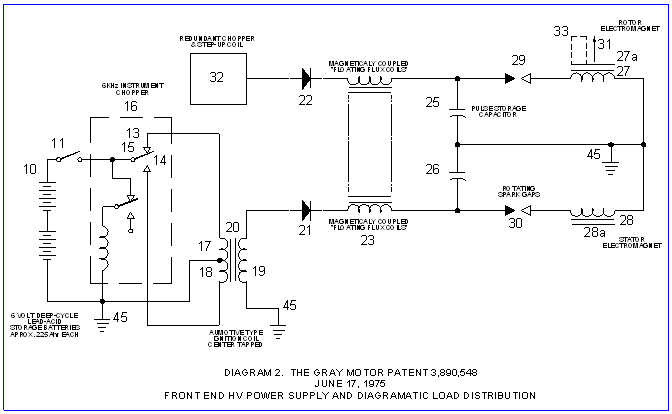
I have almost all of the components required for an initial assembly. Mr. Dollard mentions he utilized Teflon-coated coaxial cable, which is...
The project involves assembling a circuit that utilizes Teflon-coated coaxial cable, a material known for its excellent dielectric properties and high-temperature resistance. This type of cable is particularly advantageous in RF (radio frequency) applications due to its low loss and ability to maintain signal integrity over longer distances.
In this circuit, the coaxial cable will serve as the primary transmission line, connecting various components while minimizing signal degradation. The choice of Teflon coating enhances the cable's durability and makes it suitable for environments where temperature fluctuations may occur.
The schematic should include a detailed layout of the circuit, indicating the connections between the coaxial cable and other components such as resistors, capacitors, and any active devices like transistors or operational amplifiers. It is essential to specify the impedance of the coaxial cable used, typically 50 or 75 ohms, depending on the application.
Additionally, the circuit should incorporate proper grounding techniques to reduce noise and interference, ensuring optimal performance. The layout must also consider the physical arrangement of components to minimize inductance and capacitance that could affect high-frequency signals.
Overall, the assembly process will require careful attention to detail, particularly in soldering techniques and ensuring that all connections are secure to prevent signal loss. Proper testing and validation of the circuit will be necessary to confirm that it meets the desired specifications and functions as intended.Originally Posted by Spokane1 I have just about all of the parts needed for a first run. Mr. Dollard says he used Teflon coated coax, which is.. 🔗 External reference
The project involves assembling a circuit that utilizes Teflon-coated coaxial cable, a material known for its excellent dielectric properties and high-temperature resistance. This type of cable is particularly advantageous in RF (radio frequency) applications due to its low loss and ability to maintain signal integrity over longer distances.
In this circuit, the coaxial cable will serve as the primary transmission line, connecting various components while minimizing signal degradation. The choice of Teflon coating enhances the cable's durability and makes it suitable for environments where temperature fluctuations may occur.
The schematic should include a detailed layout of the circuit, indicating the connections between the coaxial cable and other components such as resistors, capacitors, and any active devices like transistors or operational amplifiers. It is essential to specify the impedance of the coaxial cable used, typically 50 or 75 ohms, depending on the application.
Additionally, the circuit should incorporate proper grounding techniques to reduce noise and interference, ensuring optimal performance. The layout must also consider the physical arrangement of components to minimize inductance and capacitance that could affect high-frequency signals.
Overall, the assembly process will require careful attention to detail, particularly in soldering techniques and ensuring that all connections are secure to prevent signal loss. Proper testing and validation of the circuit will be necessary to confirm that it meets the desired specifications and functions as intended.Originally Posted by Spokane1 I have just about all of the parts needed for a first run. Mr. Dollard says he used Teflon coated coax, which is.. 🔗 External reference
